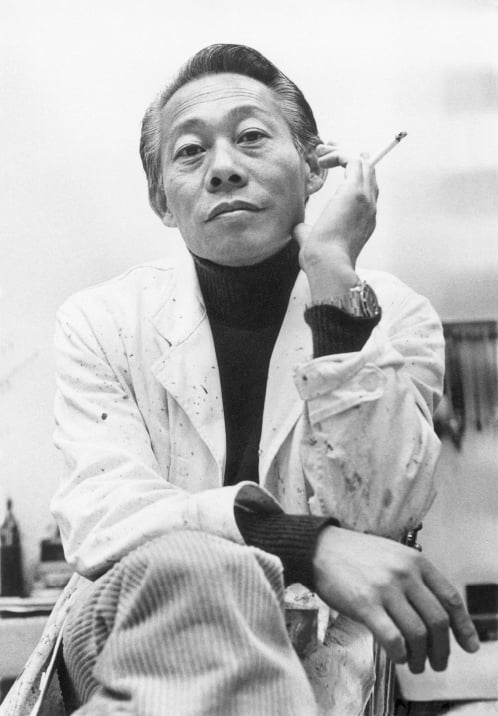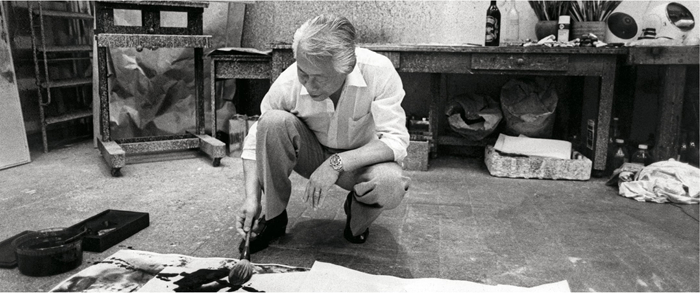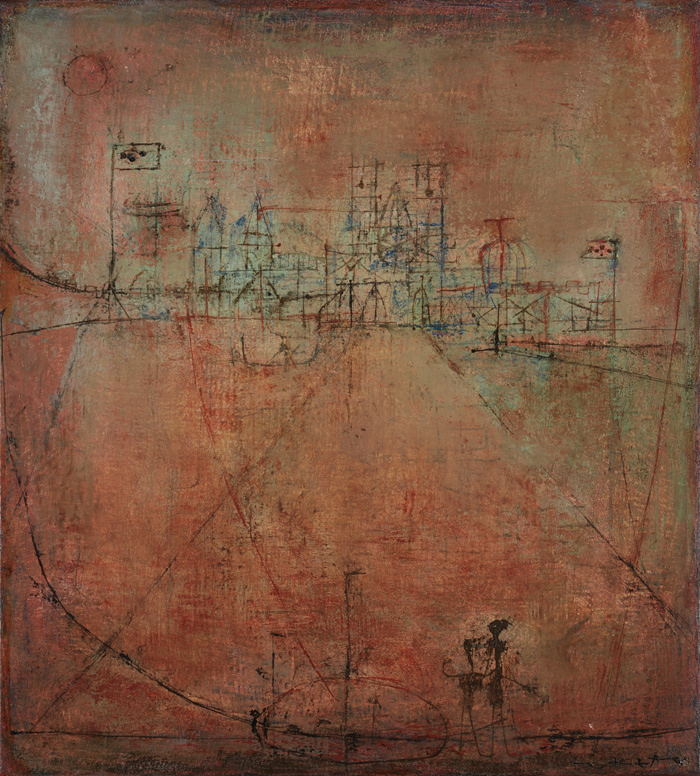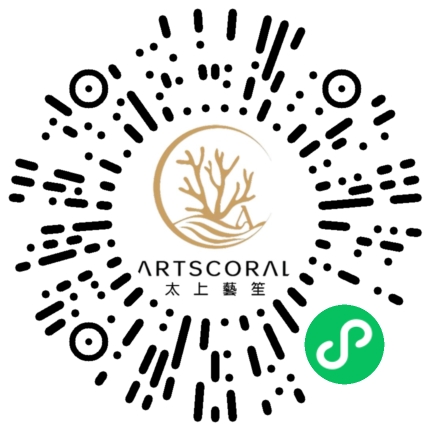
Zao Wou-ki Photographed in Mohror, 1973. Source: Zao Wou-ki Foundation
Recently, the M+ Museum in Hong Kong has officially announced that it will beLetter dated 13 December 2025 from the Permanent Representative ofrolled outAsia's first large-scale retrospective to comprehensively study the graphic works of French-Chinese master Zao Wou-ki (1920-2013)--Zao Wou-ki: Graphic Works(provisional title).As the grand finale of M+'s annual special exhibition, this exhibition will present more than 200 precious items from the collection, including prints, manuscripts, paintings and documentary archives, systematically combing the history of the twentieth-century abstract art giant's half-century-long creation on paper.

Zao Wou-ki Untitled 1978 lithograph
François Marquet Donation to M+, Hong Kong, 2024 Zao Wou-ki © ProLitteris, Zurich, 2025
Decoding Zao Wou-ki's Printmaking Experiments and Intercultural Dialogue
As one of the most internationally influential Chinese artists of the twentieth century, Zao Wou-ki is known for his oil paintings that blend Eastern ink and watercolour moods with Western abstract expression. AndThis exhibition takes a unique approach by focusing on his rarely systematically studied graphic creations, revealing the centrality of the printmaking medium in his artistic career.Beginning with Zao Wou-ki's first arrival in Paris in 1949, the exhibition runs through the more than 50 years of his creative career and is organised along both temporal and thematic lines:
Technique Exploration:From the early lithograph Henry Michaux Reading Zao Wou-ki's Lithographs (1950) to the etchings in his later years, the artist demonstrates his innovative use of techniques such as copperplate, lithography, and ink and watercolour topography.
Poetry and painting are intertwined:Focusing on the presentation of Zao Wou-ki's series of illustrations for French poets Michaux and Charles, such as Ode to Poetry and Painting (1976), revealing his deep interaction with the European literary world.
Abstract language:By comparing oil paintings and prints of the same period, the artist analyses the evolution of his signature "lyrical abstraction" style in the medium of paper.
Cultural dialogue:The exhibition includes Untitled (1978), inspired by Chinese calligraphy, as well as works that incorporate Western modernist compositions, reflecting an aesthetic practice that crosses East and West.
It is worth noting that the core exhibits of the exhibition come from two major donations:Zao Wou-ki's widow, Mrs Françoise Marquet, has donated over 200 works to M+, together with a selection of works from her daughter, Zao Shanmei. This donation makes M+ the most complete collection of Zao Wou-ki's prints in the world outside of France.

Zao Wou-ki painting Chinese ink paintings in his studio in Paris in 1981.
Photographed by Serge Lansac. Source: Zao Wou-ki Foundation
Curatorial Perspective: Redefining the Academic Value of Printmaking
The M+ team and the Zao Wou-ki Foundation jointly curated the exhibition, breaking through the traditional perception of printmaking as an "ancillary creation" and putting forward a new academic viewpoint."Applying colours to white porous lithographs, like waving a brush on rice paper, fascinates me." This is how Zao Wou-ki once described his love for lithography.The curator pointed out that compared to the long creation cycle of oil painting, printmaking provides room for improvisation and exploration - whether it is the serendipity of ink blotting or the superimposition of colours in multi-layer overprinting, all of them have become important nutrients for its abstract language.
By juxtaposing oil paintings and prints, the exhibition reveals the mutual influence of the two in terms of composition, brushwork and colour levels. For example, the fluidity of the ink works of the 1970s directly inspired the expression of the "ethereal realm" in the oil paintings, while the geometric structure of the oil painting Piazza di Siena (1951) evolved into a more dynamic rhythm of lines in the prints of the same period.
As one of the few Asian artists to join the mainstream European art scene after the war, Zao Wou-ki became a key link in the artistic dialogue between East and West through his printmaking and poetry collaborations and exhibition tours. The curatorial team has specially combed through the archives of his interactions with the Paris School and the American Abstract Expressionist group to show how printmaking helped him establish his international reputation.

Zao Wou-ki, Piazza della Siena, 1951, oil on canvas
Donated by Ms Zao Shanmei to M+, Hong Kong, 2020 Zao Wou-ki © ProLitteris, Zurich, 2025
WeChat scan the QR code below to read more!







What’s up, just wanted to say, I enjoyed this blog post.
It was helpful. Keep on posting!